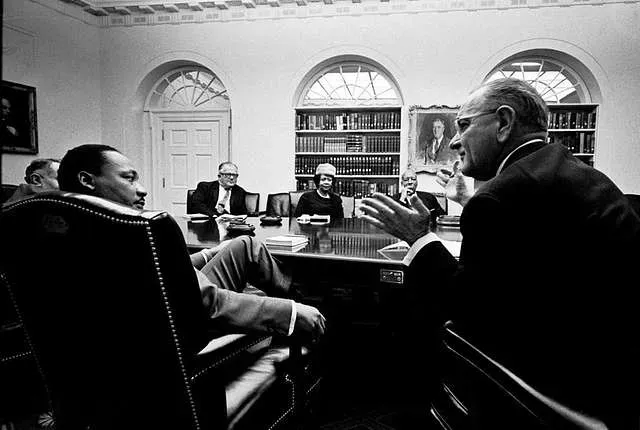OHF Weekly - Farewell Affirmative Action?
|
Older messages
Nice Democracy You Have There . . .
Tuesday, July 4, 2023
OHF WEEKLY, VOL. 5 NO. 24: Editor's Letter, “White Supremacy Always Deals from the Bottom of the Deck,” “SCOTUS Gone Amok,” “Hope Amidst Hopelessness,” “Patriots in Song and Heart,” “What, to the
Happy Fourth of July!
Tuesday, July 4, 2023
—from Clay and Sherry, the OHF Weekly Editors OHF WEEKLY Happy Fourth of July! By The OHF Weekly Editors • 4 Jul 2023 • Comment View in browser View in browser Photo by Brandon Mowinkel on Unsplash —
White Supremacy Always Deals from the Bottom of the Deck
Saturday, July 1, 2023
When Black folks say “No” to back door substitutes, double-dealings, and anything less than parity, we are saying, “This is not equality; it is unacceptable, and nothing less will do.” OHF WEEKLY White
SCOTUS Gone Amok . . . as Planned and Purchased
Thursday, June 29, 2023
Once again, the SCOTUS has shown People of Color in general, and Black people in particular, the naked disdain they are more than willing to exercise against us. OHF WEEKLY SCOTUS Gone Amok . . . as
Talking with People About Racism
Sunday, June 25, 2023
OHF WEEKLY, VOL. 5 NO. 23: Editor's Letter, “The Southern Baptists,” “Moral Bankruptcy: The Hidden Cost of Privilege,” “Provincetown: Built by and for the LGBTQ Community,” and a quote by Michelle
You Might Also Like
More AI Is Coming to Your Google Search Results 🙃
Thursday, March 6, 2025
5 Reasons You Might Qualify for Lower Car Insurance Premiums. Did you ask for "AI Mode"? Not displaying correctly? View this newsletter online. TODAY'S FEATURED STORY More AI Is Coming to
Kim K's Wet T-Shirt & Thong Swim Set May Break The Internet... Again
Thursday, March 6, 2025
Plus, how to manifest with your nail color, your daily horoscope, and more. Mar. 6, 2025 Bustle Daily 7 spring 2025 shoe trends. TREND REPORT Rihanna's Snakeskin Boots, Kylie's "Naked
What It Really Takes to Be a Millionaire by 33
Thursday, March 6, 2025
Today in style, self, culture, and power. The Cut March 6, 2025 PERSONAL FINANCE What It Really Takes to Be a Millionaire by 33 She worked multiple jobs, saved half her income, and rarely went out or
"I wanted and I sometimes got—the Moon!"
Thursday, March 6, 2025
͏ ͏ ͏ ͏ ͏ ͏ ͏ ͏ ͏ ͏ ͏ ͏ ͏ ͏ ͏ ͏ ͏ ͏ ͏ ͏ ͏ ͏ ͏ ͏ ͏ ͏ ͏ ͏ ͏ ͏ ͏ ͏ ͏ ͏ ͏ ͏ ͏ ͏ ͏ ͏ ͏ ͏ ͏ ͏ ͏ ͏ ͏ ͏ ͏ ͏ ͏
The Ultimate Workouts for Men Over 40 💪
Thursday, March 6, 2025
Build Muscle At Age 40+ With Our Best Selling Program Men's Health Shop logo Build a Stronger, Fitter Body in Your 40s and Beyond. View in Browser Muscle After 40, #1 program to build muscle after
The ultra-chic item that will turn your home into a five-star hotel
Thursday, March 6, 2025
A beloved Brighton Beach grocery store opens a Manhattan market.
Painting Snakes
Thursday, March 6, 2025
Slice-of-life comics by Edith Zimmerman. ͏ ͏ ͏ ͏ ͏ ͏ ͏ ͏ ͏ ͏ ͏ ͏ ͏ ͏ ͏ ͏ ͏ ͏ ͏ ͏ ͏ ͏ ͏ ͏ ͏ ͏ ͏ ͏ ͏ ͏ ͏ ͏ ͏ ͏ ͏ ͏ ͏ ͏ ͏ ͏ ͏ ͏ ͏ ͏ ͏ ͏ ͏ ͏ ͏ ͏ ͏ ͏ ͏ ͏ ͏ ͏ ͏ ͏ ͏ ͏ ͏ ͏ ͏ ͏ ͏ ͏ ͏ ͏ ͏ ͏ ͏ ͏ ͏ ͏ ͏ ͏ ͏ ͏ ͏ ͏
Everything You Need to Start Building Muscle at Home
Thursday, March 6, 2025
Everything you need to know to get started with your new workout routine. View in Browser Men's Health The Best Gear to Start Weight Training The great flaw of home gym-building is thinking you
More On Urbanism and Natalism
Thursday, March 6, 2025
"Cities depress fertility" is not a metaphysical truth ͏ ͏ ͏ ͏ ͏ ͏ ͏ ͏ ͏ ͏ ͏ ͏ ͏ ͏ ͏ ͏ ͏ ͏ ͏ ͏ ͏ ͏ ͏ ͏ ͏ ͏ ͏ ͏ ͏ ͏ ͏ ͏ ͏ ͏ ͏ ͏ ͏ ͏ ͏ ͏ ͏ ͏ ͏ ͏ ͏ ͏ ͏ ͏ ͏ ͏ ͏ ͏ ͏ ͏ ͏ ͏ ͏ ͏ ͏ ͏ ͏ ͏ ͏ ͏ ͏ ͏ ͏ ͏
Women in Sign Painting: Burds of the Brush
Thursday, March 6, 2025
Rachel E Millar shares her and her guests' reflections on the first Burds of the Brush in Glasgow. BLAG Magazine: Adventures in Sign Painting Craft, Community & Culture Women in Sign Painting:


